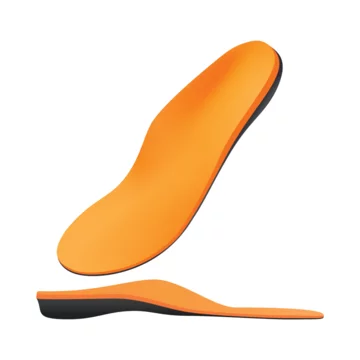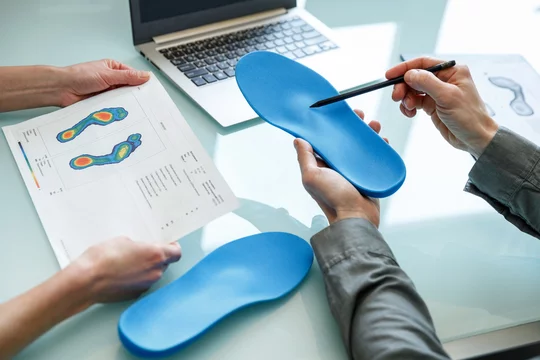How Do Insoles Work? A Comprehensive Guide

Insoles are essential components of many shoes, designed to enhance comfort, support, and overall foot health. This article will explore how insoles work, their benefits, types, and how to choose the right ones for your needs.
What Are Insoles?
Insoles, also known as footbeds or inserts, are placed inside shoes to provide cushioning and support. They come in various materials and designs, catering to different foot shapes and conditions.
The Anatomy of Insoles
Insoles typically consist of several layers:
- Top Layer: This layer comes in direct contact with your foot. It’s usually made from soft, breathable materials to enhance comfort.
- Cushioning Layer: Below the top layer, this section absorbs shock and reduces impact on your feet. It can be made from foam, gel, or air.
- Arch Support: This part provides stability and helps maintain the natural curve of the foot. It can vary in height and firmness depending on the design.
- Base Layer: The bottom layer provides structural support. It helps the insole maintain its shape and durability over time.
How Insoles Work
Insoles work in several ways to improve your footwear experience:
1. Shock Absorption
Every step we take creates impact on our feet. Insoles are designed to absorb this shock, reducing stress on joints and muscles. This feature is especially beneficial for athletes or those who spend long hours on their feet.
2. Pressure Distribution

Insoles help distribute body weight evenly across the foot. This reduces pressure points that can lead to discomfort or pain. A well-distributed pressure can improve overall foot health.
3. Arch Support
Many people have varying arch types: flat, normal, or high. Insoles provide tailored support to the arch, promoting better help.
4. Improved Stability
Insoles enhance the stability of your foot within the shoe. They help keep your foot in the correct position, reducing the risk of injuries caused by slips or falls. This is particularly beneficial for individuals with unstable feet or those engaging in sports.
5. Enhanced Comfort
The cushioning provided by insoles increases overall comfort. They soften the impact of hard surfaces and can make wearing shoes for extended periods more bearable. This is crucial for people who work on their feet all day or those who enjoy long walks.
6. Temperature Regulation
Certain insoles are designed to help regulate foot temperature. Materials that wick moisture away can keep feet dry, preventing issues like blisters and fungal infections. Keeping feet cool and dry is essential for overall comfort and health.
Types of Insoles

Insoles come in various types, each serving different needs:
1. Cushioning Insoles
These insoles focus primarily on providing extra cushioning and comfort. They are typically made from soft materials like memory foam or gel. Ideal for daily wear, they help reduce fatigue during long periods of standing or walking.
2. Arch Support Insoles
Designed for individuals with specific arch needs, these insoles provide targeted support. They can help alleviate pain associated with flat feet or high arches. Arch support insoles come in various shapes and sizes, allowing for a customized fit.
3. Orthotic Insoles
Orthotic insoles are prescribed by healthcare professionals for specific foot conditions. They provide personalized support and correction for issues like overpronation, plantar fasciitis, or other biomechanical problems. These insoles are often custom-made to fit the individual’s foot.
4. Sports Insoles
Athletic insoles are designed for high-impact activities. They provide extra cushioning and support to enhance performance and reduce the risk of injury during sports. These insoles often incorporate moisture-wicking materials to keep feet dry during intense workouts.
5. Thermal Insoles
These insoles are made from materials that retain heat, keeping feet warm in cold conditions. They are especially useful for outdoor activities in winter or for individuals who suffer from cold feet.
How to Choose the Right Insoles
Selecting the right insoles is crucial for achieving the desired benefits. Here are some tips to help you make the best choice:
1. Identify Your Foot Type
Understanding your foot type is essential. You can determine if you have flat, normal, or high arches. This knowledge will guide you in selecting insoles that provide the right support.
2. Primary Uses
If you’re primarily using them for daily activities, cushioning insoles may be sufficient. For athletic purposes, look for sports insoles designed for specific activities, like running or basketball.
3. Assess Your Foot Issues
If you have specific foot problems, such as plantar fasciitis, bunions, or arthritis, consider orthotic insoles. Consulting a healthcare professional can help you find the best option for your condition.
4. Try Before You Buy
Whenever possible, try insoles in-store to gauge comfort and fit. Walk around in them to see how they feel. If you purchase online, check the return policy in case they don’t meet your expectations.
5. Look for Quality Materials
High-quality materials improve durability and comfort. Look for insoles made from breathable fabrics, supportive foams, or gels. Avoid cheaper options that may wear out quickly or fail to provide adequate support.
6. Check Size and Fit
Ensure that the insoles fit well in your shoes without causing crowding. They should fill the shoe’s space comfortably while allowing your foot to move naturally. Many insoles come in various sizes or can be trimmed for a better fit.
Benefits of Using Insoles
Incorporating insoles into your footwear can provide numerous advantages:
1. Pain Relief
Many users experience significant pain relief after using insoles. They help alleviate discomfort caused by prolonged standing, walking, or specific foot conditions.
2. Improved Posture
By providing the right support, insoles can help improve posture. Proper alignment of the feet contributes to better overall body alignment, which can reduce back and joint pain.
3. Increased Activity Levels
With enhanced comfort and reduced pain, many people find they can be more active. Whether it’s walking, running, or participating in sports, insoles can encourage a more active lifestyle.
4. Extended Shoe Life
Good insoles can also prolong the life of your shoes. They help absorb wear and tear, reducing the need for frequent shoe replacements.
5. Versatile Use
Insoles can be used in various types of footwear, including sneakers, dress shoes, boots, and sandals. This versatility makes them a valuable addition to any wardrobe.
How to Care for Your Insoles
Proper care can extend the life of your insoles and maintain their effectiveness:
1. Regular Cleaning
Depending on the material, clean your insoles regularly. Most foam and gel insoles can be wiped down with a damp cloth. If they are machine washable, follow the manufacturer’s instructions.
2. Drying
Allow your insoles to dry completely after cleaning. Avoid direct sunlight or high heat, as this can damage the materials. Instead, air-dry them in a cool, dry place.
3. Check for Wear and Tear
Periodically inspect your insoles for signs of wear, such as thinning or cracking. Replace them as needed to ensure they continue providing support.
4. Rotate Between Pairs
If you have multiple pairs of shoes, consider rotating insoles. This practice can help prolong the life of both your insoles and shoes.
Conclusion
Insoles are more than just an accessory; they are an integral part of maintaining foot health and comfort. Understanding how insoles work and choosing the right type for your needs can significantly impact your overall well-being. Whether you are looking for cushioning, support, or relief from foot pain, there is an insole designed to meet your specific requirements.
Investing in quality insoles can enhance your comfort, improve your performance in daily activities, and promote better foot health. Take the time to assess your needs, try different options, and enjoy the many benefits that properly fitted insoles can bring. With the right insoles, you can step confidently into each day, knowing your feet are well-supported.
